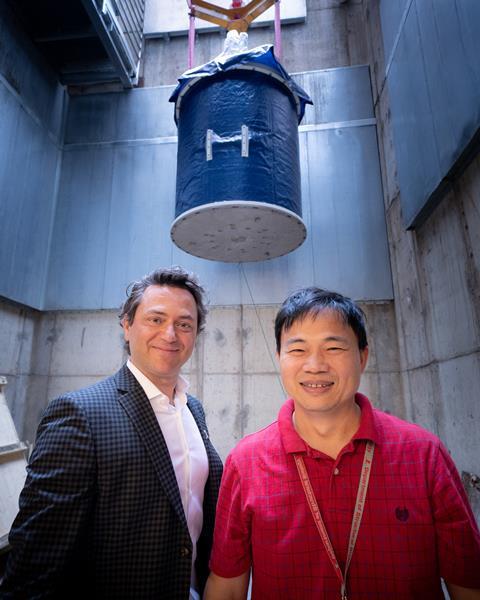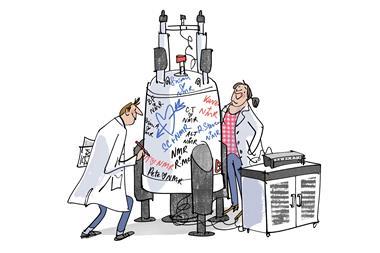
A children’s hospital in the US now has one of the world’s largest and most powerful nuclear magnetic resonance (NMR) spectrometers for studying biomolecules. Researchers at St Jude Children’s Research Hospital will use the instrument to study biomolecules to improve their understanding of the development of diseases such as cancer.
‘We are a research hospital with a very strong emphasis on basic science and particularly on understanding life and disease at the atomic detail,’ says Charalampos ‘Babis’ Kalodimos, chair of the department of structural biology. ‘Only by understanding the mechanisms of the important biological processes in the cell will we be able to understand how abnormal cells can give rise to disease and how to therapeutically intervene.’
The new 1.1GHz NMR spectrometer, made by Massachusetts-based Bruker, is the centrepiece of the structural biology department’s expansion in Memphis, Tennessee. ‘This 1.1GHz system provides unprecedented capabilities and opportunities for us to answer challenging biological questions,’ Kalodimos says. ‘It will be our most important tool to perform research in the area of dynamic molecular machines that are otherwise not amenable to other technologies. We will use it to study the structure and dynamic properties of biological systems such as protein kinases, molecular chaperones, transcription factors, membrane proteins and other important biomolecules.’
Kalodimos says the new instrument will be available to all researchers on campus – he expects around 80 users – as well as to researchers from other institutions through scientific collaborations.
The department also has several other NMR instruments operating at frequencies ranging from 400MHz to 850MHz. It uses three other frontline techniques to examine biomolecular structures: cryogenic electron microscopy and tomography, x-ray crystallography and single molecule imaging. Structural biologists combine the results from each technique to understand the structures of complex biomolecular systems.
‘With the expansion of the structural biology department, we are creating the world’s most comprehensive research centre for defining the structure of the molecular machines that carry out basic functions within cells,’ said James Downing, president and chief executive of St Jude in a statement. ‘This information will enhance our ability to understand what drives paediatric cancer and other catastrophic diseases of childhood and, ultimately, advance cures for these diseases.’
Correction: The headline was updated on 17 September 2019 as other instruments can lay claim to being the most powerful of their kind












No comments yet